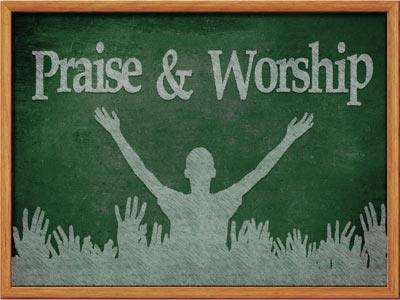-
A "Model" For Worship
Contributed by Joel Santos on Nov 28, 2017 (message contributor)
Summary: A short Psalm, it somehow captures all the elements about worship and puts the worship of God in a different perspective than the usual.
Nowhere in scripture will you find a better “model” for worship than Psalm 113. A short Psalm, it somehow captures all the elements about worship and puts the worship of God in a different perspective than the usual.
A. It Tells us the WHO of Praise (V.1a)
It starts out by saying “Praise the Lord” in verse 1. He is the object of our praise. As stated earlier, He is the audience, not the people who gather. On the contrary, they are the “performers.” While true worship is subjective in that it is always experiential, it is first objective, in that the object lies beyond us. The Lord is the recipient of our adoration, blessing, thanksgiving, songs and hallelujahs. If we can remember that in planning a worship service, it will color everything we say, sing and do.
B. It Tells us who the PRAISE-GIVERS Are (V.1b)
Again in verse 1, “Praise O SERVANTS of the Lord, praise the name of the Lord.” We are the praise-givers, not the praise receivers.
Again, we enter into worship to dispense something, not to receive something. To be sure, we do receive, but the receiving is the normal outcome of the dispensing. It is interesting that David referred to the praise-givers as “servants.” He didn’t call us worshippers, congregation, audience or people, but “servants.” I believe this was deliberate, because it shows the proper relationship between the worshipper and the worshipped.
Only believers can truly worship God. The direction of worship is from believers to God. We magnify God’s name in worship by expressing our love and commitment to him. Unbelievers simply cannot do this.
C. It Tells us the TIME FACTOR of Worship (V.2)
Verse 2 says, “Blessed be the name of the Lord, FROM THIS TIME FORTH AND FOREVERMORE.”
So worship is not just something you do in church on Sunday mornings, and then maybe again on Sunday evenings or mid-week.
It is an on-going attitude of life that should permeate our thinking and our speech. To be sure, there will be times of concentrated worship, special times of personal worship, other times set aside for entering into corporate worship with intensity. But as far as “when” to worship, it’s an on-going, unceasing experience we develop as an attitude of gratitude. Driving the car, mowing the lawn, washing the dishes, taking a shower, or just listening to music can provide excellent setting for worship.
D. It Tells us the GEOGRAPHICAL BOUNDARIES of Worship (V.3)
Verse 3 says, “From the rising of the sun to its setting, the name of the Lord is to be praised!”
Any way you measure that phrase, it means the whole earth, every nation, tribe, every race, every culture, every level of creation… the whole earth is to praise the Lord.
E. It Tells us the PERSPECTIVE of Worship (V.4)
“The Lord is high above the nations, and his glory above the heavens!”
The exaltation of God makes our worship a cosmic exercise. He is exalted above the earth, above all that is common and mundane, above the heavens, indeed above the highest heavens! When we enter into an intense time of worship. Something big is happening that transcends all human transactions! If you want your perspective stretched, then just worship in Spirit and in truth.
When the missing ruby of worship is restored, Satan will indeed be routed. He shudders to think of the power present in the midst of a worshipping people. Churches that are learning to worship God biblically, unrestrained, uninhibited, and not bound and gagged by generations of tradition are indeed growing. People are attracted to people who worship.
“O, sing to the Lord a new song, For He has done marvelous things!” - Psalm 98:1
Every church likes to believe its worship style is the most biblical. The truth is, there isn’t a biblical style of worship. Each Sunday true believers around the world give glory to Jesus Christ using a thousand equally valid expressions and styles. Regardless of styles, true worship employs both your right brain and your left brain. It engages both emotion and intellect, your heart and your mind. We must worship in spirit and in truth.

 Sermon Central
Sermon Central



